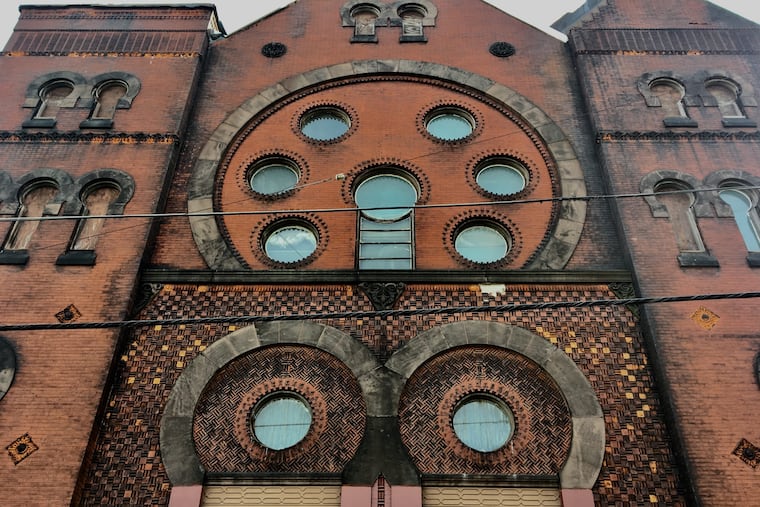In North Philadelphia, Moorish-style synagogue tells the story of aspiration and change
An exotic relic now houses a Baptist church.

In the late 19th century, as America's Jewish immigrants began to prosper and become more visible, they started building what might be called statement sanctuaries, structures that rivaled Christian churches in magnificence. Eager to move away from the small, inward-facing synagogues that had been a legacy of centuries of European persecution, they looked for an architectural language to express and celebrate their Jewish identity. In Philadelphia and other big cities, American Jews turned to places where Judaism had flourished in the past, particularly Byzantium and Moorish Spain, and borrowed bits and pieces of those period styles.
Frank Furness' 1873 design for the original Rodeph Shalom on North Broad is probably the best known of these Moorish-Byzantine composites. It was demolished in 1926 to make way for Simon & Simon's equally impressive art deco synagogue, but another great Moorish synagogue design manages to survive in North Philadelphia's Ludlow section.
The former synagogue at 1717 N. Seventh St. is now the home of the New Greater Straightway Baptist Church, but its facade still tells the story of Jewish aspiration. The monumental, brick-and-brownstone synagogue opened a few years after Furness' Rodeph Shalom, in 1888, when Ludlow was becoming a destination for middle-class Jews looking to escape South Philadelphia's cramped rowhouses.
By then, the fashion for Moorish Revival was in full swing. The congregation of Adath Jeshurun chose architect J. Franklin Stuckert to design its new building, even though he does not appear to have had much of a track record of building synagogues. Maybe that explains why his design is more subdued than other Moorish fantasies, like Manhattan's Central Synagogue. Still, Adath Jeshurun included all the basics: keyhole doors, keyhole windows, and Byzantine onion domes. The fanciful hats topped off the synagogue's two square towers and could be seen across the neighborhood.
Those onion domes, sadly, are long gone, victims of the slide that began after Jews started leaving North Philadelphia in the 1960s. Fortunately, the building was rescued and reinhabited by a series of black churches. It passed through several owners before ending up in the hands of Greater Straightway in 1982.
The Baptist congregation has managed to preserve most of the facade's original features. Stuckert concentrated the building's drama around the main entrance. After ascending a few steps, you are greeted by a matching pair of keyhole doors, embedded in a spectacular array of decorative brick. Parquet-like tiles surround the porthole windows before giving way to an expanse of unusual protruding bricks. Each section is outlined in a thick slab of brownstone.
The design's oddest feature is what Hidden City calls the "telephone dial," a ring of porthole windows set into the central gable. The ring takes the place of the traditional rose window and further accentuates the building's Moorish theme. Some of the keyhole windows on the ground floor have been covered in protective plastic, but, if you look closely, you can see through to the original stained glass. The colorful windows would have helped animate the building's dark facade.
The Ludlow neighborhood hit its low point in the late 1980s, according to a 1988 report in the Inquirer by Maida Odom. As people fled North Philadelphia, the Victorian townhouses that framed the synagogue and gave it context collapsed in on themselves. It's a tribute to Greater Straighway's resilience that it was able to maintain the former synagogue. The building has been listed on the city's historic register since the '80s.
Since then, the neighborhood has bounced back. The Philadelphia Housing Authority, working with the Asociación Puertorriqueños en Marcha, has repopulated this stretch of North Seventh with suburban-style single-family homes featuring traditional, peaked gables. Now lined with trees and tidy gardens, it is a very different context from the one the Moorish-style synagogue was born into. But the neighborhood's revival gives hope that this exotic relic will still be around to tell North Philadelphia's next chapter.